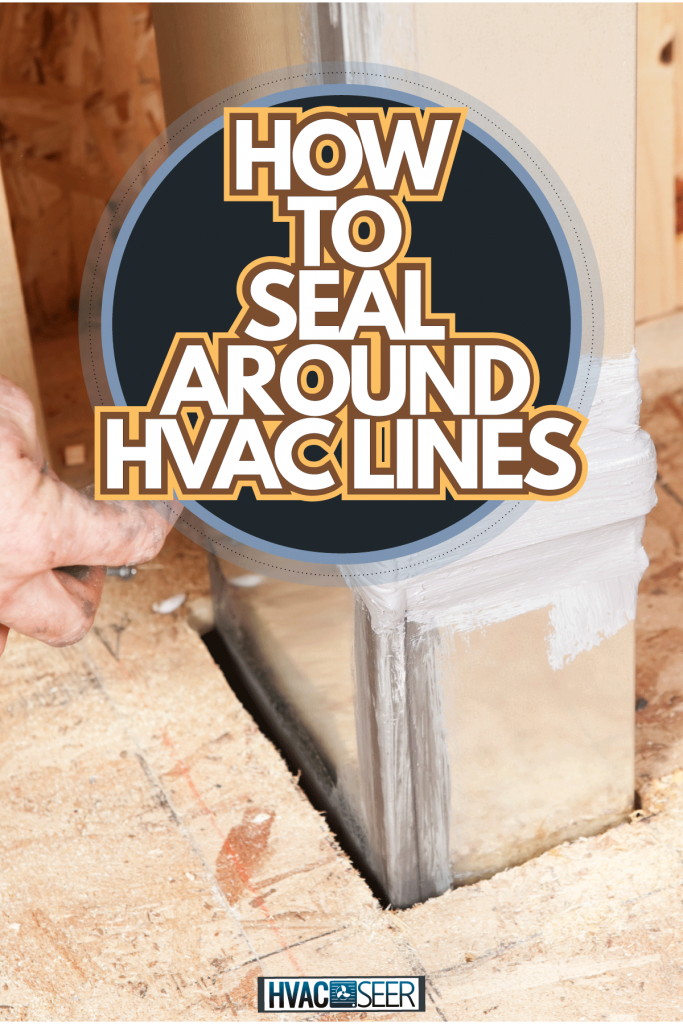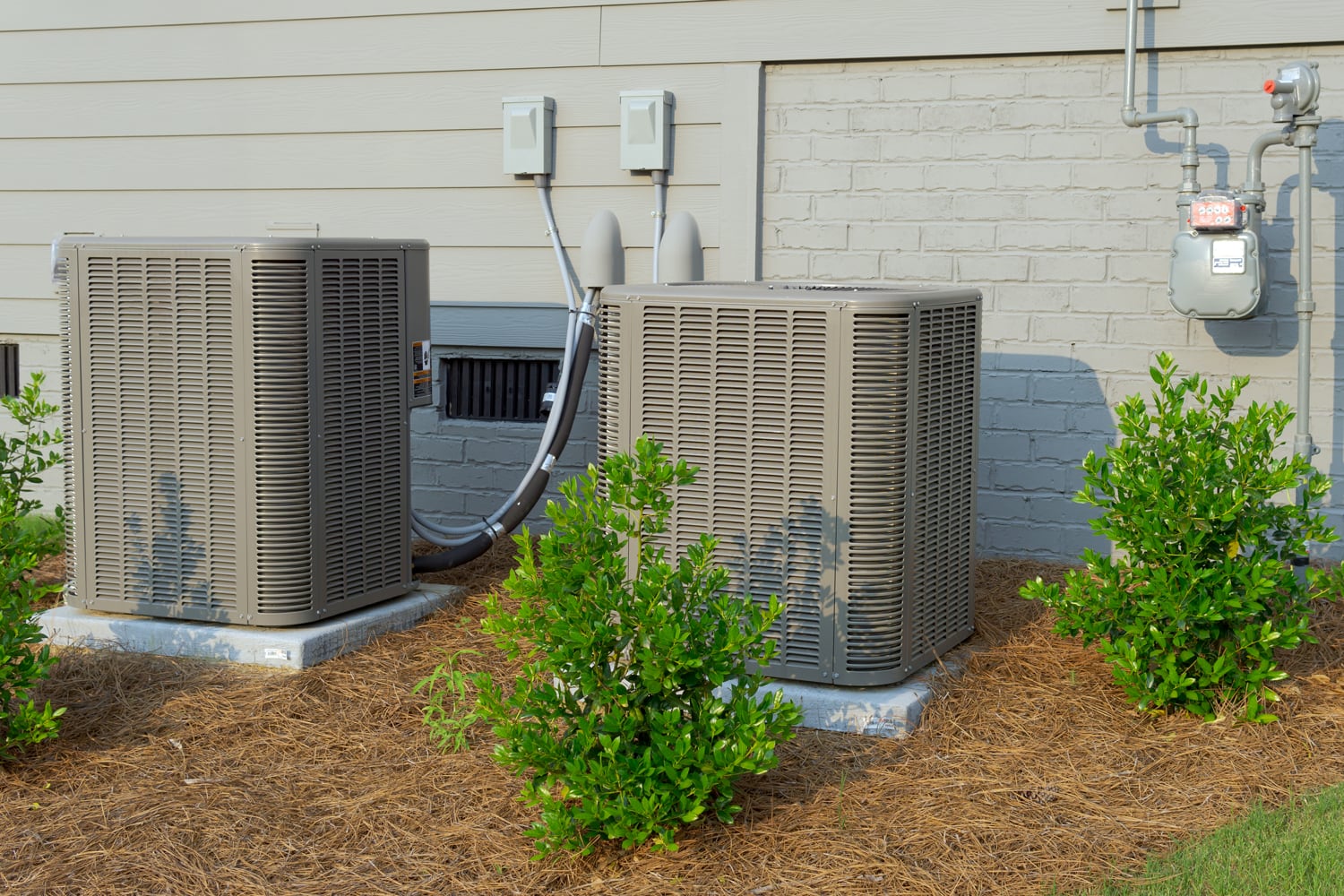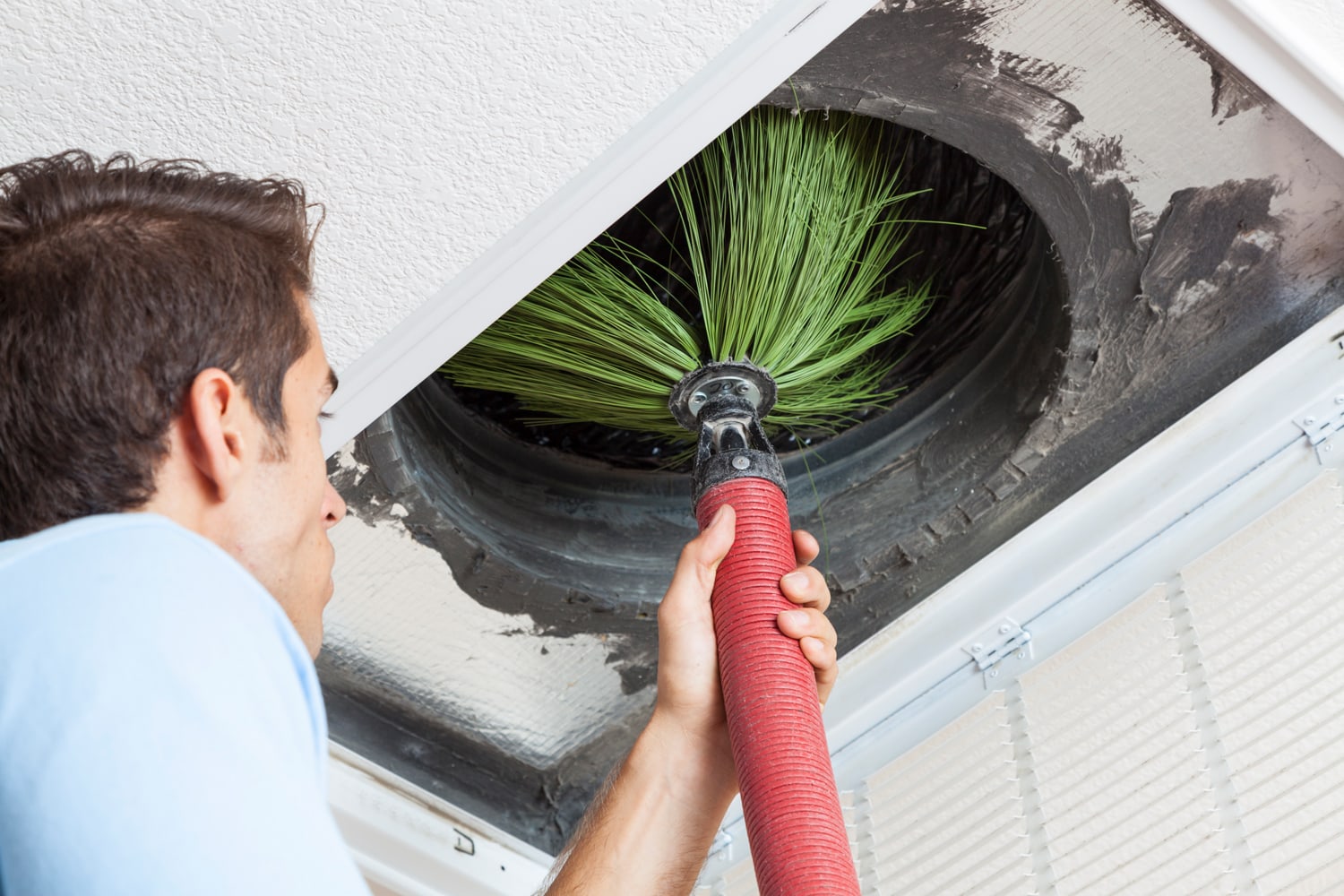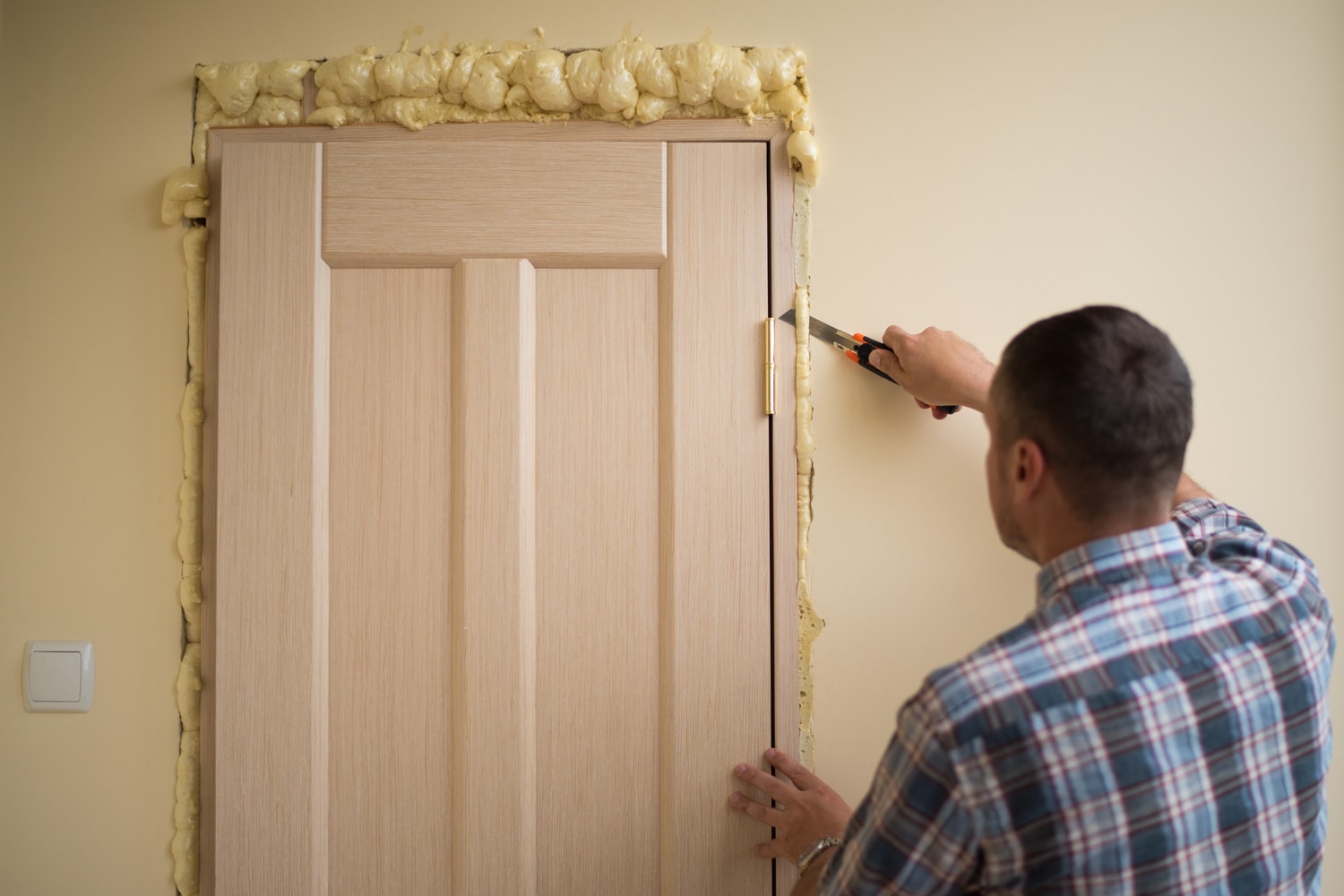HVAC lines are a very common air sealing issue for modern homes. Having noticed this problem in your own house, you may wonder how to seal around those HVAC lines. We combine industry professional knowledge and up-to-date research to answer your question in this post thoroughly.
- Remove Debris from Gap
- Purchase Caulk, Caulk Gun, or Spray Foam
- Load and Prep Caulk Gun and Test Applicator
- Fill Gap with Silicone Caulk or Spray Foam
- Remove Excess Material
- If Desired, Paint to Match or Finish
Keep reading the rest of this post for details on each of the above steps. This guide includes all you need to fix these pesky home air leaks. To conclude, we answer several questions related to the topic of this post.

How To Seal Around HVAC Lines
According to the US Department of Energy, sealing any exterior hole, including around HVAC lines, is an essential home improvement. This is because these holes let unconditioned outside air into your home, leading to higher utility bills and a lower level of in-home comfort.
There are many techniques for filling these HVAC line holes. However, many strategies are not as long-lasting or effective. Thus, we discuss filling HVAC line holes using silicone caulk and spray foam.

The term 'HVAC line' applies to the refrigerant lines that connect your inside blower unit to the outside condenser unit of your air conditioning system. In some cases, both an outflow and an inflow line will need sealing.
Further, the directions covered here apply to most exterior home air sealing tasks. Knowing this, it is smart to seal all of your home holes in one go. This cuts down on material waste time per sealing location and may have profound energy-saving benefits.
The directions for specifically sealing a gap around your HVAC lines are provided, in a step-by-step fashion, in the following six subsections.
1. Remove Debris from Gap
First of all, it is easier and more effective to fill a gap that is clean and free of debris. Expect things like dirt, cobwebs, and old caulk.
This cleaning job does not require water or soap and can usually be done with gloved fingers alone. Sometimes, you may have to use a stiff brush or a utility knife.

2. Purchase Caulk, Caulk Gun, and Spray Foam
Generally, use caulk for gaps that are 3/8-inch wide or so and smaller. This measurement refers to the distance between the line and the edge of the hole. It is difficult to get caulk to stay and properly cure in larger gaps.
For larger gaps, use spray foam. This material is appropriate for gaps that are up to around a 1-inch wide. You will have to use foam board, plywood, or other materials for even larger gaps, which is uncommon for HVAC lines.
Caulk
If you plan on painting the caulk, be sure to get the paintable variety. On the other hand, the market is full of caulk colors that may be a perfect match for your exterior paint.
Click here for silicone caulk from Amazon.
If you need to buy a caulk gun for this project, be sure that you purchase the right size for the tube of caulk you are buying. These caulk guns are very handy DIY tools that most homeowners will get a good deal of use out of.
Click here for a caulk gun from Amazon.
Alternatively, if you do not plan on doing a lot of housework, you can buy a tube of caulk that does not require a specialized applicator gun. These squeeze out like a tube of toothpaste, come with less total caulk material, and usually have lids making them more reusable.
Spray Foam
Click here for spray foam from Amazon.
Spray foam for this project is sold in a can. For the easiest job, get the type of foam that comes with a long straw-like applicator.
3. Load and Prep Caulk Gun and Test Applicator
Now, load your caulk gun with the tube of caulk. Also, you will need to cut the tip-off of the end of the caulk tube. Generally, err on the side of cutting off too little rather than too much of the tip. This is because you can always cut more off.

If you have never worked with caulk before, now test out the speed at which the material comes out of the end of the caulk gun on a disposable surface. Take note, the caulk will continue to ooze out even after you have stopped depressing the gun's trigger.
If you are using spray foam, test out the speed of this material and how much it expands. It is very easy to overapply spray foam and make it difficult to clean up the mess.
4. Fill Gap with Silicone Caulk or Spray Foam
Here, the goal is to fill the gap entirely but not have much spillover. This usually only requires a small amount of caulking. It is ok if some caulk falls into the wall, but if you have spillover on the outside of the wall, it can be a mess to clean up.
Use the same technique for spray foam. Remember, the foam will expand, so start with a little and only add more if needed.
5. Remove Excess Material
If you used caulk, wipe off the excess with your finger or a caulking tool. Aim for a smooth concave ring of caulk around the HVAC line. This means no globs or parts of caulking stick out past the wall.
Click here for a caulking tool from Amazon.
Sometimes, it may be handy to have a disposable rag, like a paper towel, nearby to wipe caulk off your hands or the caulking tool.

For the spray foam, allow the material to first dry. Then, use a utility knife or similar tool to cut any excess foam away. Be very careful not to damage the HVAC lines during this process.
6. If Desired, Paint to Match or Finish
Once the caulk has thoroughly dried, you can now paint it to match the exterior of your home. Also, the caulk tube's directions indicate how long the caulk needs to dry before being painted.
Click here for a pipe hole cover from Amazon.
Spray foam, unfortunately, is not very easy to paint. Thus, consider buying a pipe hole cover to act as the finish over the spray foam. This is important because spray foam is often an awful bright orange color.
Alternatively, you can also choose not to finish/paint the fix. For certain houses and HVAC line locations, this may not be a problem at all.
What do you use to seal walls around air conditioning hose?
As mentioned above, seal walls around an air conditioning hose using either waterproof silicone caulk or spray foam. Alternatively, it is also possible to trim around the hole with wood or shove a rag or other similar material into the hole.
What is the best way to seal the hole around air conditioning pipes coming into the house from an external air conditioner?
This post discusses how to fill an HVAC line hole using silicone caulk or spray foam. We choose to detail these methods because they are the best way to seal a hole around air conditioning pipes coming into the house from an external air conditioner.
How do I fill the gap around my air conditioner?
For window air conditioners, it is best to fill the gaps with an insulative material such as foam board. Further, foam board can easily be cut down to exactly the right size for your gap. Generally, you want the foam board to be tight into the space so that it is difficult for air to move around the board.
For some windows, which have contours on the side that you need to fill, you may need to cut channels into the foam board to match those contours.
For a visual guide on doing this job, watch this short YouTube video. Take note most window air conditioning holes will be more difficult to fill than the one depicted here:
How do you winterize a wall air conditioner?
Some homes have permanent wall air conditioners. These appliances are pretty nice in the summer but let in cold air when winter comes around. Thus, it is important to winterize these air conditions before freezing temperatures set in.
Click here for an AC cover from Amazon.
The easiest method for this winterization is to buy premade air-conditioner covers. These provide a decent level of both insulation and air sealing. Be sure to purchase a cover that matches the dimensions of your wall AC unit.
Click here for foam board from Amazon.
Alternatively, you can install insulation on the outside of the air conditioner. Use closed-cell foam board because it doubles as an air barrier. Cut the board to fit the hole and slide it in. You may need to fashion removable latches so you can take the panel off again in the summer.
Further, some homeowners will choose to caulk around their wall AC units to stop unwanted airflow in summers and winters.
Additional Reading
To learn more about air sealing your home, read these excellent HVAC Seer articles:
In Closing
In this post, we answered the question of how to seal a gap around HVAC lines. We include a full rundown of this process, suggesting two different techniques which work for different situations. To close, we answer several related questions. Good luck!







